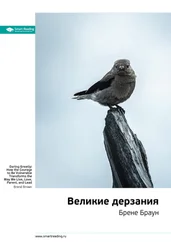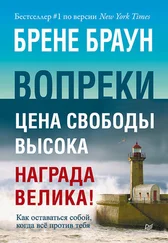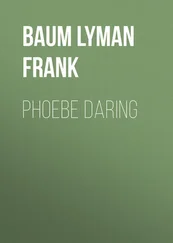CODING
I used the constant comparative method to analyze the data line by line, and then I developed memos to capture the emergent concepts and their relationships. The primary focus of the analysis was identifying the participants’ main concerns and the emergence of a core variable. As I conducted additional interviews, I reconceptualized categories and identified the properties that inform each category. I used selective coding when core concepts emerged and the data were saturated across categories and across their properties.
Grounded theory researchers are required to conceptualize from the data. This approach is very different from traditional qualitative methods that yield findings based on thick description of data and participant quotes. To conceptualize shame, Wholeheartedness, and vulnerability, and to identify the participants’ main concerns about these topics, I analyzed data line by line while asking the following questions: What are the participants describing? What do they care about? What are they worried about? What are the participants trying to do? What explains the different behaviors, thoughts, and actions? Again, I used the constant comparative method to reexamine the data against the emerging categories and their related properties.
LITERATURE ANALYSIS
For the same reasons the grounded theorist allows the research problem to emerge from the data, a full review of the significant literature is conducted after the theory is generated from the data. The literature reviews done in quantitative research and traditional qualitative research serve as buttresses on both sides of research findings—literature reviews are conducted to support the need for new research, the research is conducted, findings emerge independent of the literature, and the research is again supported by the literature to demonstrate its contribution to the researcher’s profession.
In grounded theory, data buttress the theory and the literature is part of the data. I learned very quickly that grounded-theory researchers cannot go into the literature review thinking, The theory has emerged, I’m done, how does it fit? Instead, the grounded theorist must understand that the literature review is actually a literature analysis and it is not separate from the research but is a continuation of the process.
The references and related research quoted in this book both supported and informed the emerging theories.
EVALUATING GROUNDED THEORY
According to Glaser, grounded theories are evaluated by assessing their fit, relevance, workability, and modifiability. The theory has achieved “fit” when the categories of the theory fit the data. Violations of fit occur when data are forced into preformed categories or discarded in favor of keeping an existing theory intact.
In addition to fit, the theory must be relevant to the action of the area. Grounded theories are relevant when they allow the core problems and processes to emerge. Workability is achieved if the theory can explain what happened, predict what will happen, and interpret what is happening in an area of substantive or formal inquiry. There are two criteria for evaluating whether a theory “works”—the categories must fit and the theory must “work the core of what is going on.” Working the core means that the researcher has conceptualized the data in a way that accurately captures the participants’ main concerns and how they continually address those concerns. Last, the principle of modifiability dictates that the theory can never be more correct than its ability to work the data; thus, as the latter reveals itself in research, the former must constantly be modified.
As an example, I look at the various concepts that I presented in this book (e.g., the armory, minding the gap, disruptive innovation, etc.) and ask, “Do these categories fit the data? Are they relevant? Do they work the data?” The answer is yes, I believe they accurately reflect what emerged from the data. Like shame resilience theory, my quantitative colleagues will test my theories on Wholeheartedness and vulnerability and we will push the knowledge development process forward.
As I look back on this journey, I realize the deep truth in the quote I shared at the beginning of this chapter. There really is no path. Because the research participants had the courage to share their stories, experiences, and wisdom, I forged a path that defined my career and my life. When I first realized and resented the importance of embracing vulnerability and living a Wholehearted life, I would tell people that I was hijacked by my own data. Now, I know that I was rescued by it.
Practicing Gratitude
It is not joy that makes us grateful; it is gratitude that makes us joyful.
—Brother David Steindl-Rast
To my literary agents, Jo-Lynne Worley and Joanie Shoemaker: Thank you for believing in me and in the work.
To my manager, Murdoch Mackinnon: “You’re a great copilot. Here’s to landing more planes.”
To my writing teacher and editor, Polly Koch: I literally couldn’t do it without you. I’m so grateful.
To Jessica Sindler, my editor at Gotham: Thank you for your wisdom, insight, and the super-fun sleepover. I feel like I won the editor lottery.
To my publisher Bill Shinker and to the entire Gotham team, Monica Benalcazar, Spring Hoteling, Pete Garceau, Lisa Johnson, Anne Kosmoski, Casey Maloney, Lauren Marino, Sophia Muthuraj, Erica Ferguson, and Craig Schneider: Thank you for your talent, patience, and enthusiasm.
Gratitude to the gang at Speaker’s Office: Holli Catchpole, Jenny Canzoneri, Kristen Fine, Cassie Glasgow, Marsha Horshok, Michele Rubino, and Kim Stark: Hey JCan! Am I supposed to be in Edmonton?
So grateful for the talent and artistry of graphic designer Elan Morgan and for the amazing work of artist Nicholas Wilton. Thanks to Vincent Hyman for his editing talent and to Jayme Johnson of Worthy Marketing Group for her communication and connection wisdom.
Thank you to the friends who challenge me to show up, be brave, and dare greatly: Jimmy Bartz, Negash Berhanu, Shiferaw Berhanu, Farrah Braniff, Wendy Burks, Katherine Center, Tracey Clark, Ronda Dearing, Laura Easton, Kris Edelheit, Beverly and Chip Edens, Mike Erwin, Frieda Fromen, Peter Fuda, Ali Edwards, Margarita Flores, Jen Grey, Dawn Hedgepeth, Robert Hilliker, Karen Holmes, Andrea Corona Jenkins, Myriam Joseph, Charles Kiley, Jenny Lawson, Jen Lee, Jen Lemen, Harriet Lerner, Elizabeth Lesser, Susie Loredo, Laura Mayes, Mati Rose McDonough, Patrick Miller, Whitney Ogle, Joe Reynolds, Kelly Rae Roberts, Virginia Rondero-Hernandez, Gretchen Rubin, Andrea Scher, Peter Sheahan, Eileen Singleton, Diana Storms, Alessandra de Souza, Ria Unson, Karen Walrond, Jess Weiner, Maile Wilson, Eric Williams, and Laura Williams.
To the curators of TEDx Houston: Javier Fadul, Kara Matheny, and Tim DeSilva. Thank you for trusting me and taking a chance.
To the larger TED family: In 1998 I told Steve that my dream was to start a national conversation about shame. Thank you for making that dream come true. Thank you to Chris Anderson, Kelly Stoetzel, June Cohen, Tom Rielly, Nicholas Weinberg, Mike Lundgren, and the entire team of idea spreaders and dream makers.
To my research assistants, Saba Khonsari and Yolanda Villarreal: Thank you for your commitment, patience, and hard work.
To our parents: Deanne Rogers and David Robinson, Molly May and Chuck Brown, Jacobina and Bill Alley, Corky and Jack Crisci: Thanks for always believing in us, loving us so fiercely, being totally crazy about our children, and teaching us to dare greatly.
To my sibs, Ashley and Amaya Ruiz; Barrett, Frankie, and Gabi Guillen; Jason Brown; and Jen and David Alley: Thank you for the love, support, laughter, tears, high fives, and fist bumps.
Читать дальше


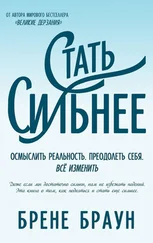

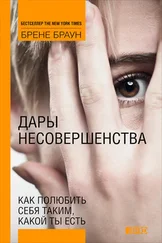
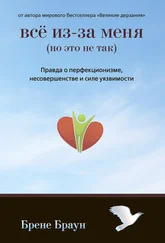
![Брене Браун - Вопреки. Как оставаться собой, когда всё против тебя [litres]](/books/436389/brene-braun-vopreki-kak-ostavatsya-soboj-kogda-v-thumb.webp)
